This Post May Contain Affiliate Links. Please Read Our Disclosure Policy.
Tender, slow-cooked pork adobo is an easy recipe full of rich, tangy, slightly sweet flavors. Serve it over a bed of rice or on its own for a simple but delicious meal!
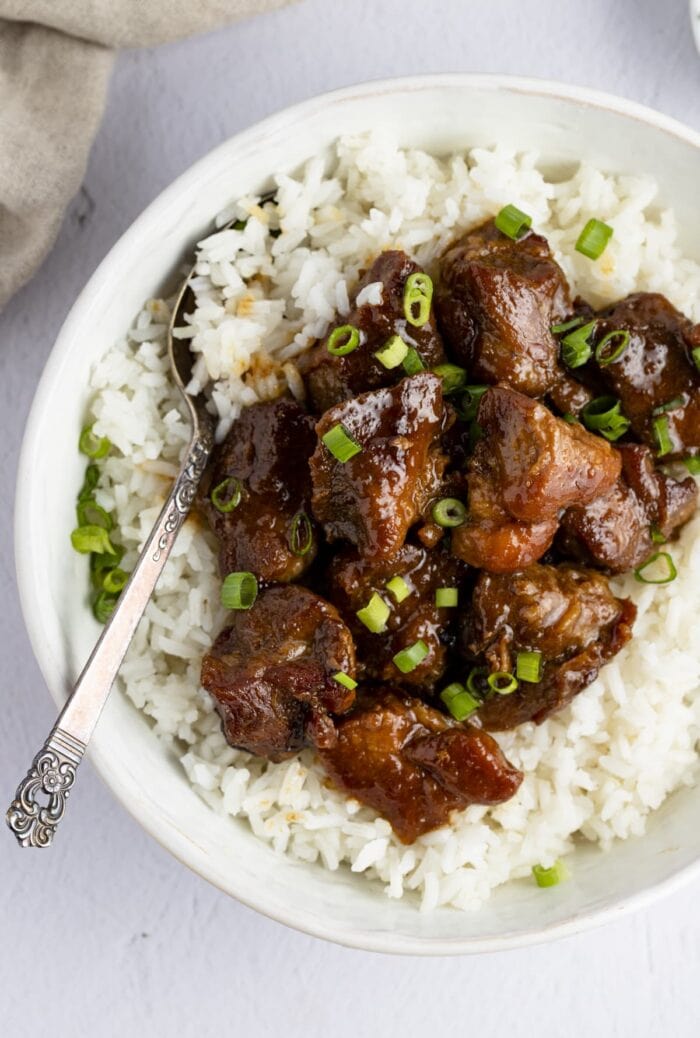
Why You’ll Love This Recipe
- Adobo is a Filipino cooking technique (and dish) where you simmer meat in a mixture of soy sauce, vinegar, and aromatics. There are a lot of variations on pork adobo, so while this recipe might not be a fully authentic Filipino pork adobo, it’s still delicious! You can adjust the ingredients and quantities as you like to get your perfect adobo.
- The slow cooking method gives you tender, juicy pork in a rich, thick, flavorful sauce. It’s tangy and a little sweet, smoky and a little salty.
- This is a great option for busy days. It’s a little time consuming, because the pork adobo needs to cook on the stove for an hour or so. The actual hands-on cooking doesn’t take much time at all, though! You can mix everything together then handle something else for 40 minutes while dinner cooks.
Key Ingredients
Pork Shoulder – You could also use other fatty cuts, like pork belly or pork butt, if you prefer. I’d avoid pork loin, though, since it’s so lean. It’s just too easy to overcook! If you don’t eat pork, try this recipe with chicken instead.
Soy Sauce – Be sure to opt for a low-sodium soy sauce if you’re watching your sodium intake or just prefer a less-salty taste.
White Vinegar – This gives the dish its acidity! Don’t worry, the flavor mellows as it cooks, so it’s not overpowering.
Brown Sugar – Adds just a little sweetness to the pork adobo! You can use a brown sugar substitute (like Brown Swerve) or coconut sugar if you’re trying to fit certain dietary needs. You could also skip this completely if you want.
Chef’s Tips
- If you don’t want loose peppercorns in your pork adobo, put them in a cheesecloth sachet or a tea ball strainer before adding them to the dutch oven. That way you get all the flavor from the peppercorns without having them mixed in with the sauce!
- You might be tempted to skip the browning step and go straight to cooking everything all together. Don’t! Browning the pork gives it a better texture and a deeper flavor.
- On that note, resist the urge to rush the reduction, too. Reducing the sauce allows it to thicken a little more, but it also enriches the flavors and gives the dish its gorgeous dark color. If the sauce isn’t as thick as you’d like it after 15 minutes, let it simmer uncovered another 5 minutes or so.
- Pork adobo is delicious on its own, but you can serve it on top of a bed of white rice or alongside noodles or veggies, too!
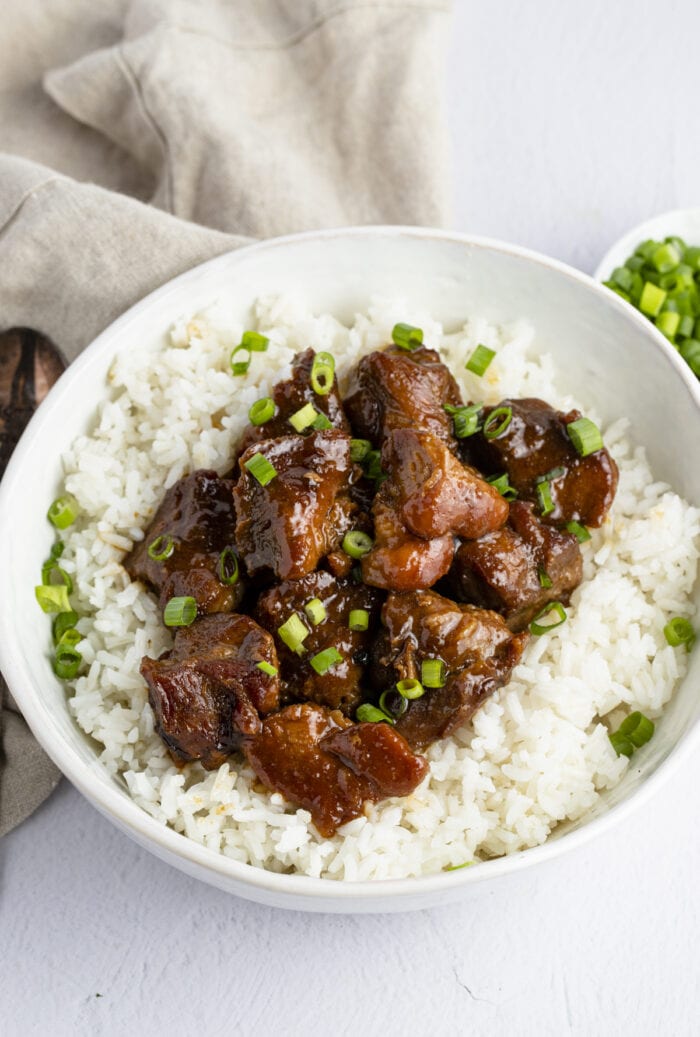
Other Pork Recipes You’ll Enjoy
- Easy Baked Pork Chops and Rice
- Air Fryer Pork Tenderloin
- Pork Belly Burnt Ends on the Grill
- Instant Pot Pulled Pork
- Pork Chop Brine
- Whole30 Enchiladas with Poblano-Pork Stuffing & Creamy-Avocado Sauce
- Pork Chop with Apples
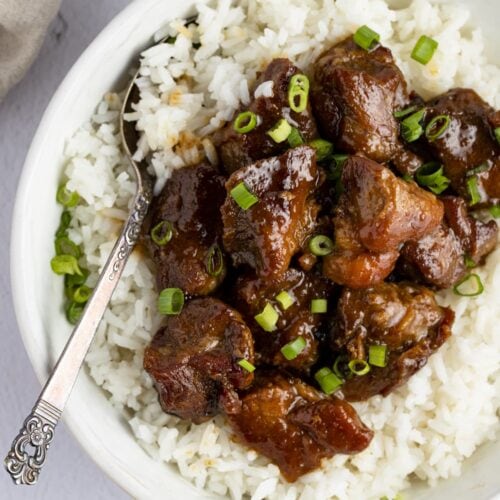
Pork Adobo
Equipment
- Dutch oven or heavy-bottomed pan with lid
Ingredients
- 2 tablespoons neutral oil for cooking
- 2 pounds pork shoulder cut into 1" chunks
- 2 cloves garlic minced
- ⅓ cup soy sauce
- ⅓ cup white vinegar
- 2 bay leaves
- ½ tablespoon black peppercorns
- 1 tablespoon brown sugar or Brown Swerve
Instructions
- Heat 2 tablespoons neutral oil in dutch oven over medium-high heat. When oil is hot, add pork shoulder and brown on all sides.
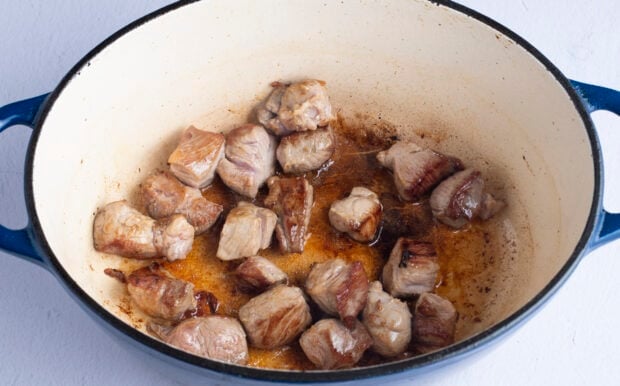
- Add remaining ingredients to dutch oven and stir to combine, thoroughly coating pork. Reduce heat to simmer. Cover and cook 40 minutes until pork is cooked through.
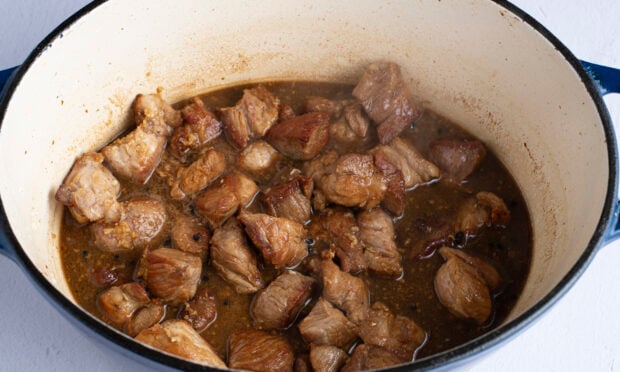
- Uncover and cook an additional 10 to 15 minutes or until sauce has reduced. Discard bay leaves. Serve pork adobo warm with desired sides.
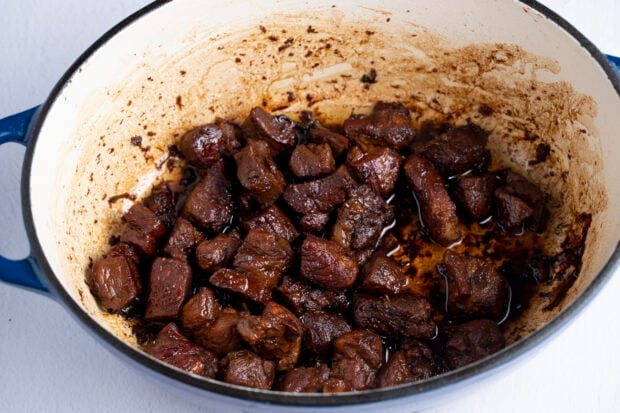
- Make it Gluten-Free: Substitute coconut aminos for soy sauce.
- Make it Keto/Sugar-Free: Substitute Brown Swerve for brown sugar.
- Make it Paleo: Substitute coconut aminos for soy sauce and coconut sugar for brown sugar.
Approximate Information for One Serving
Nutrition Disclaimers
Number of total servings shown is approximate. Actual number of servings will depend on your preferred portion sizes.
Nutritional values shown are general guidelines and reflect information for 1 serving using the ingredients listed, not including any optional ingredients. Actual macros may vary slightly depending on specific brands and types of ingredients used.
To determine the weight of one serving, prepare the recipe as instructed. Weigh the finished recipe, then divide the weight of the finished recipe (not including the weight of the container the food is in) by the desired number of servings. Result will be the weight of one serving.
Did You Make This Recipe?
Tag @40aprons on Instagram and be sure to leave a review on the blog post!
Never Miss A Meal!
New Recipes Straight To Your Inbox
A curated selection of our most recent recipes, delivered straight to your inbox once a week.
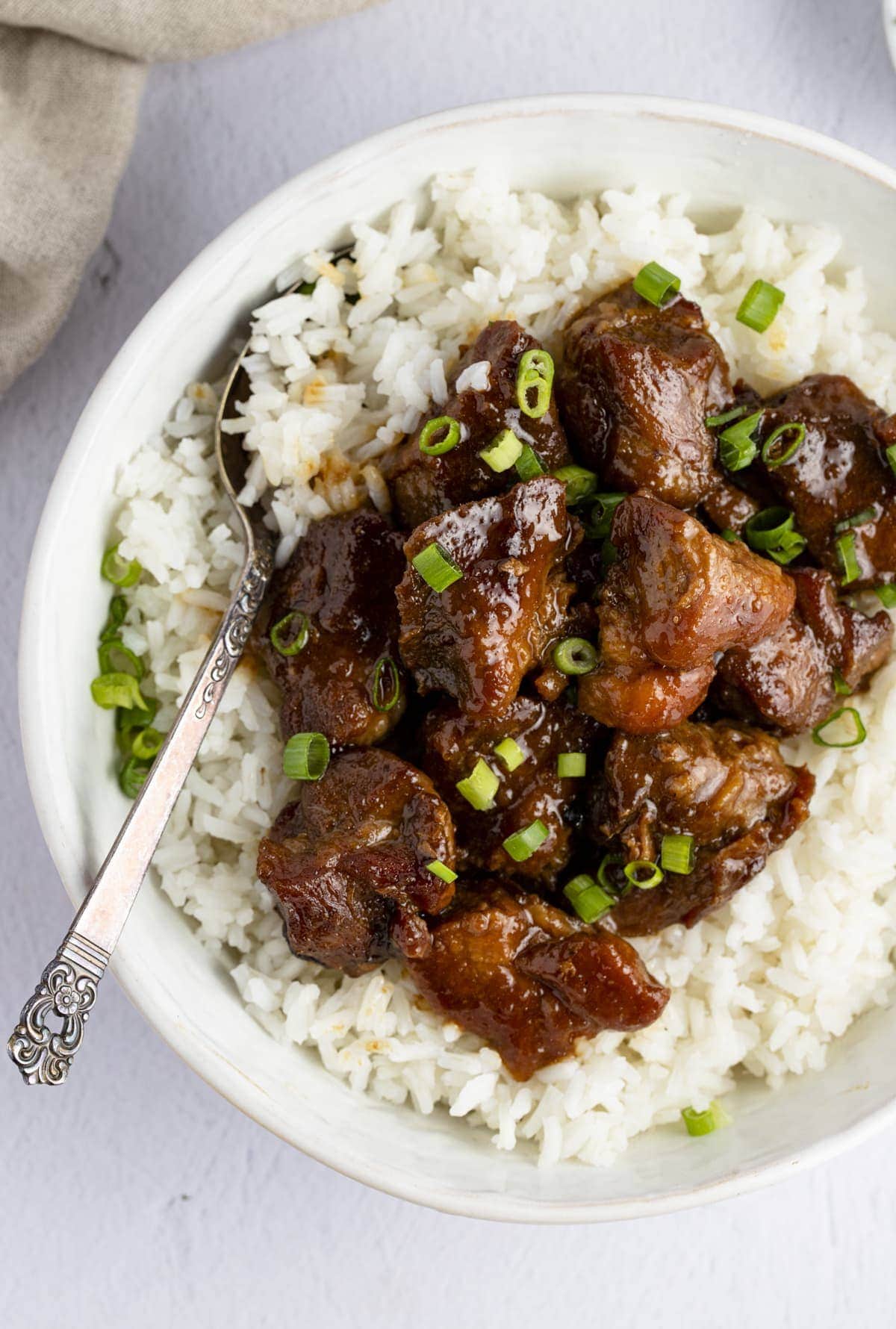
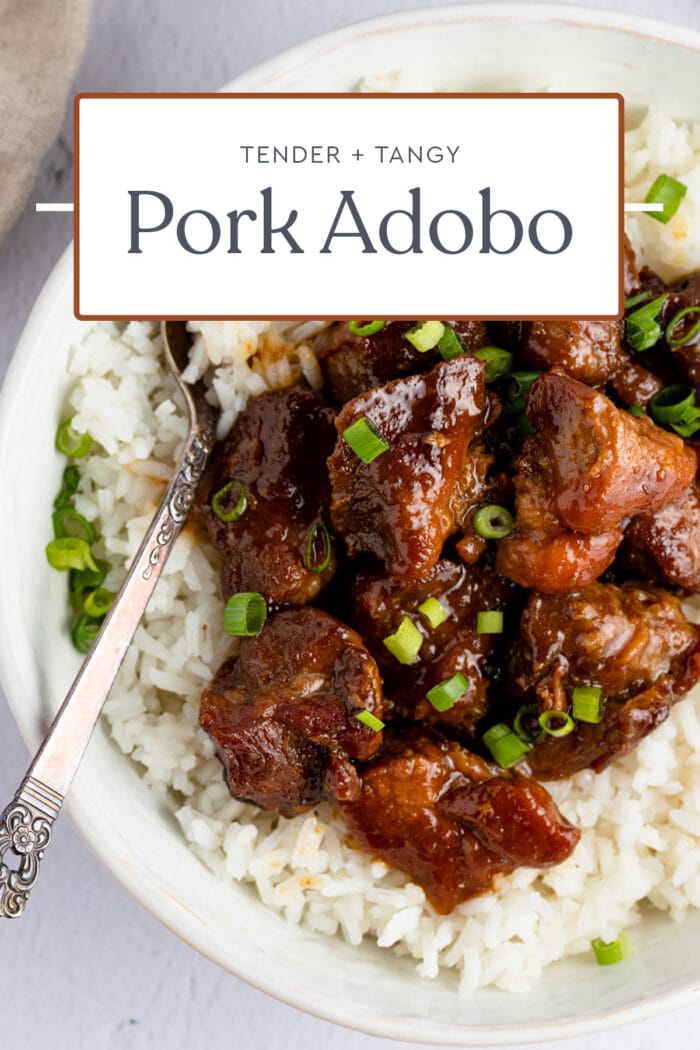
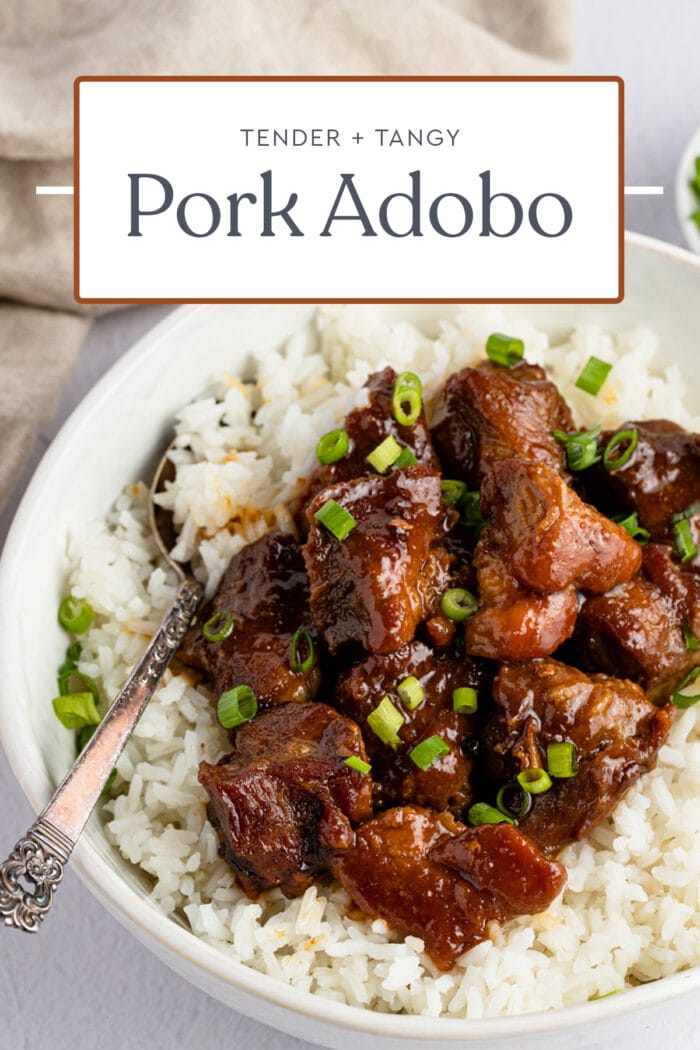
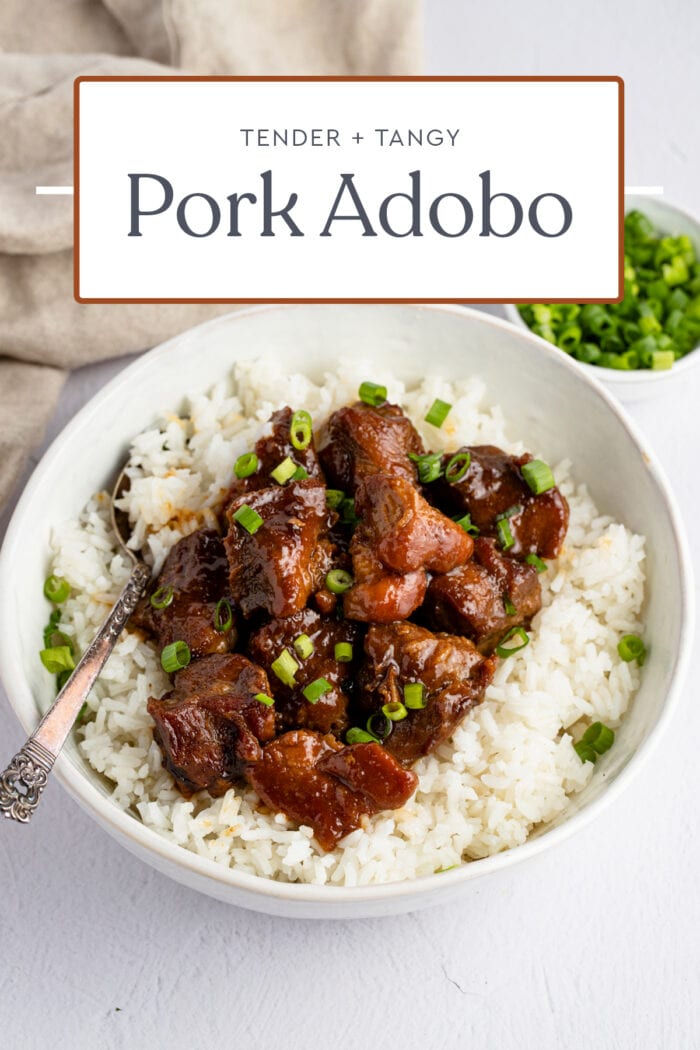
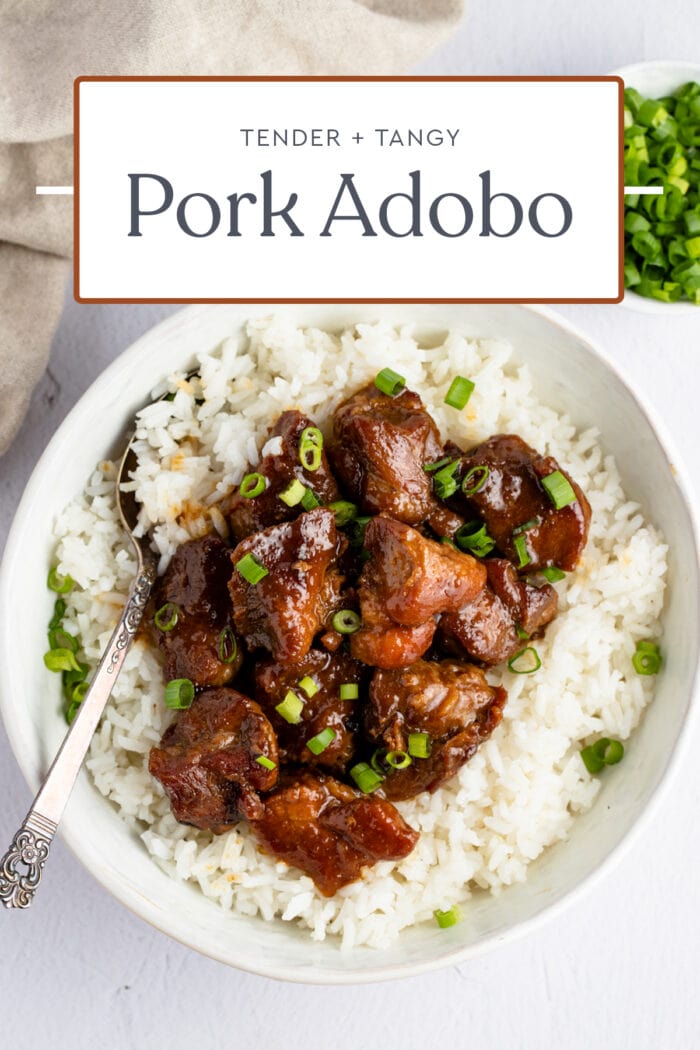
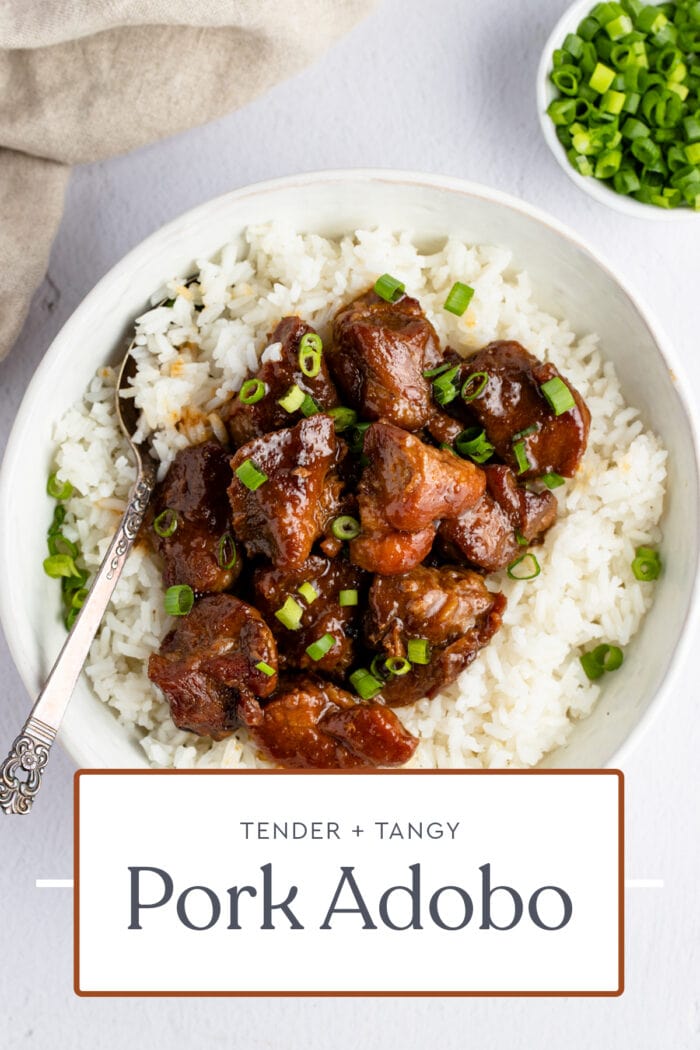
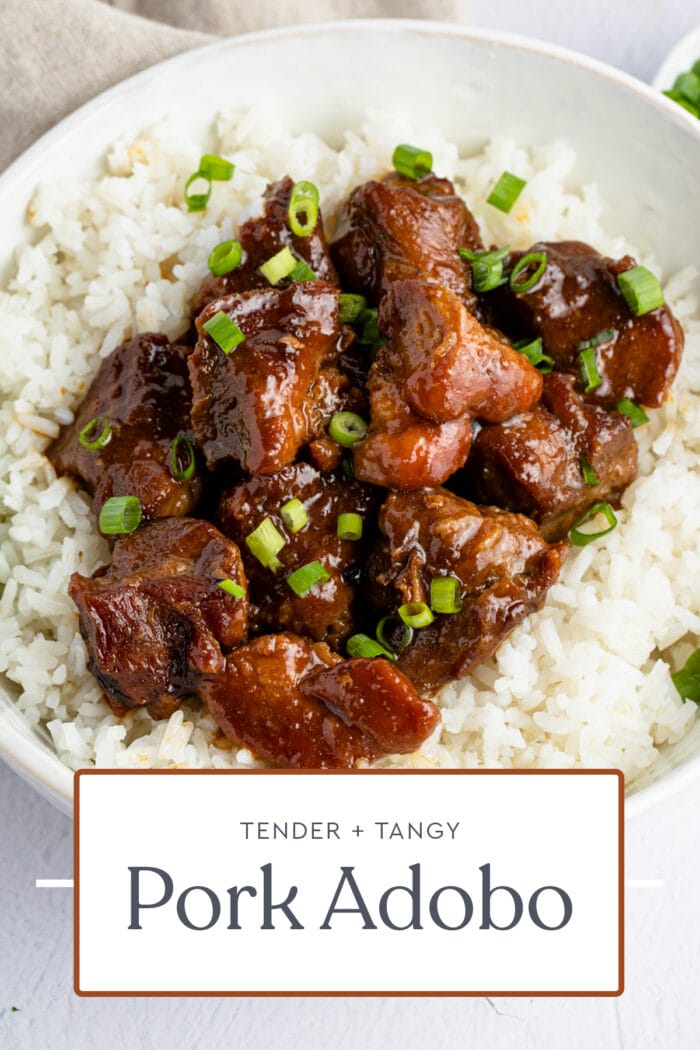
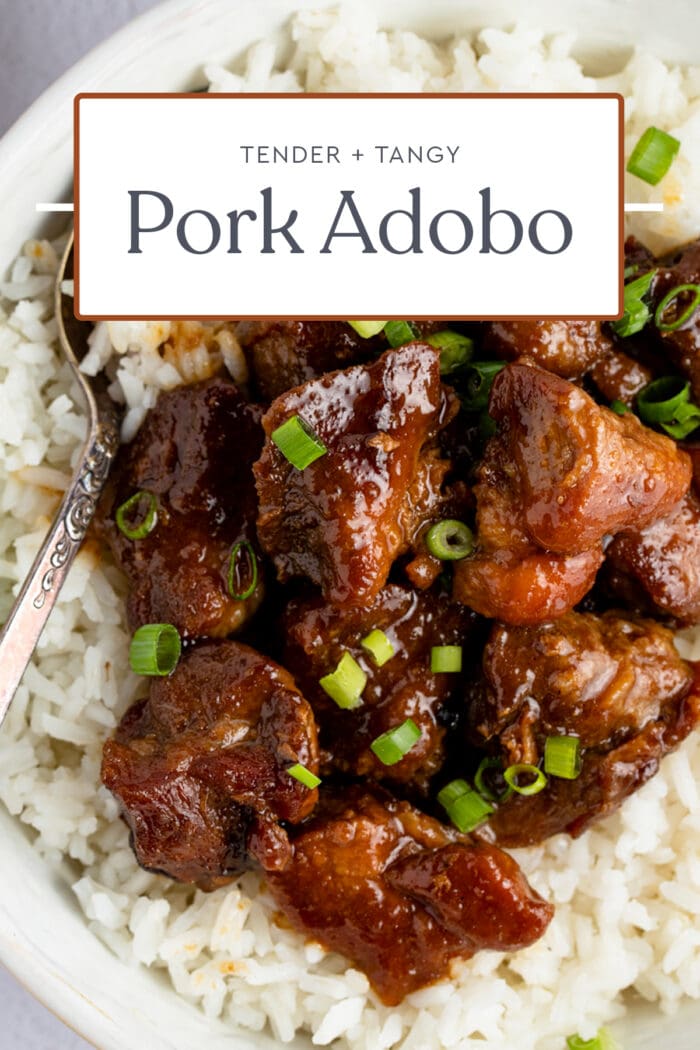
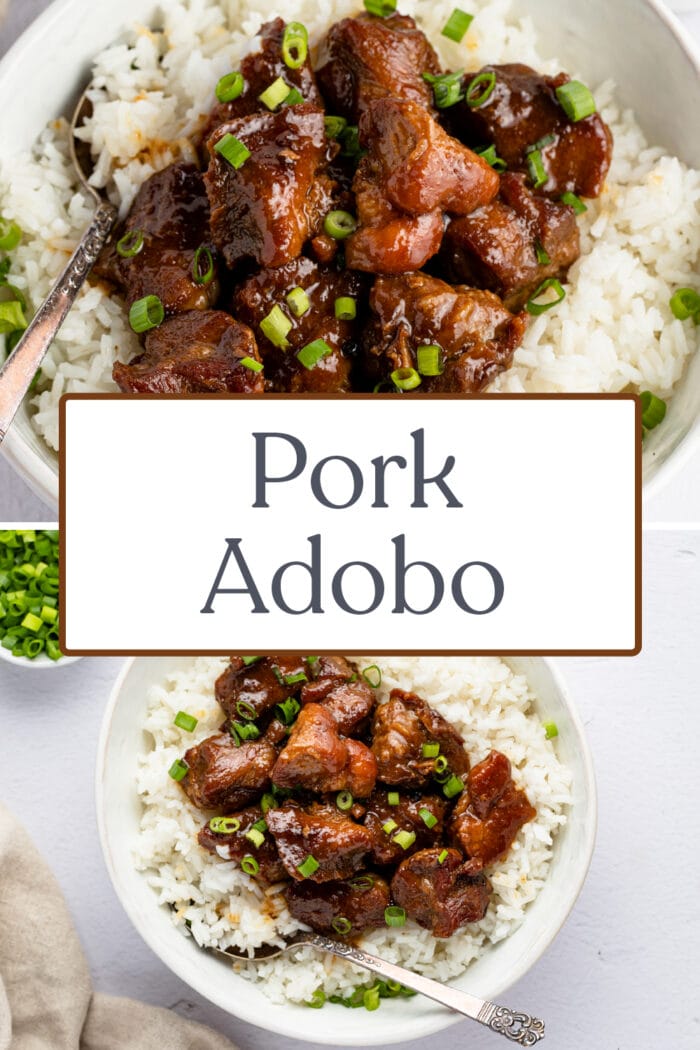
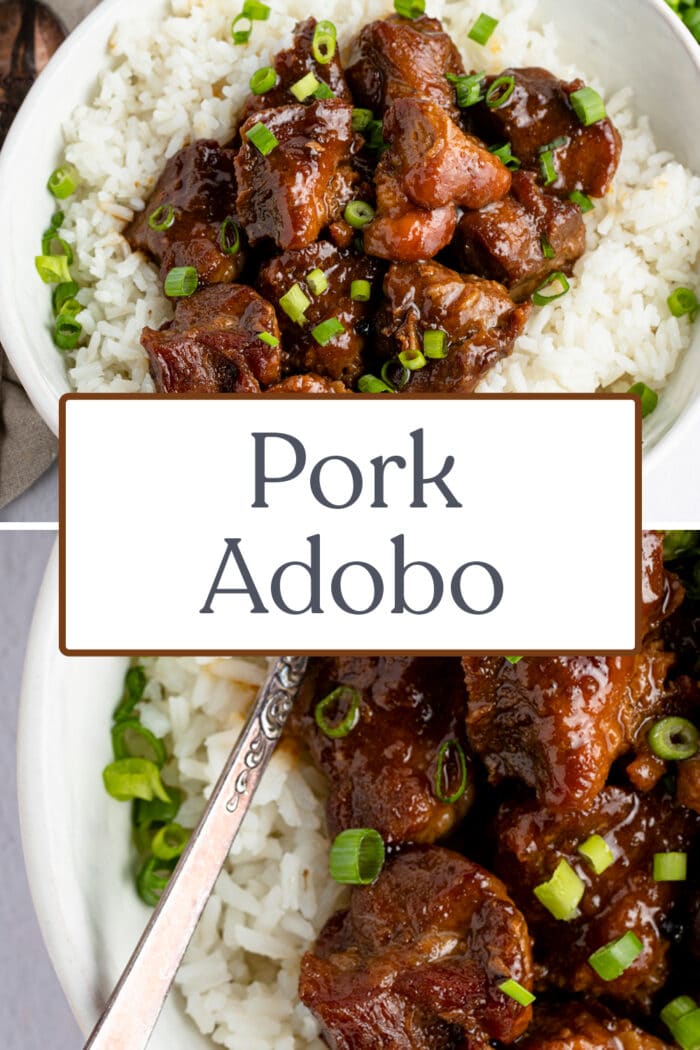
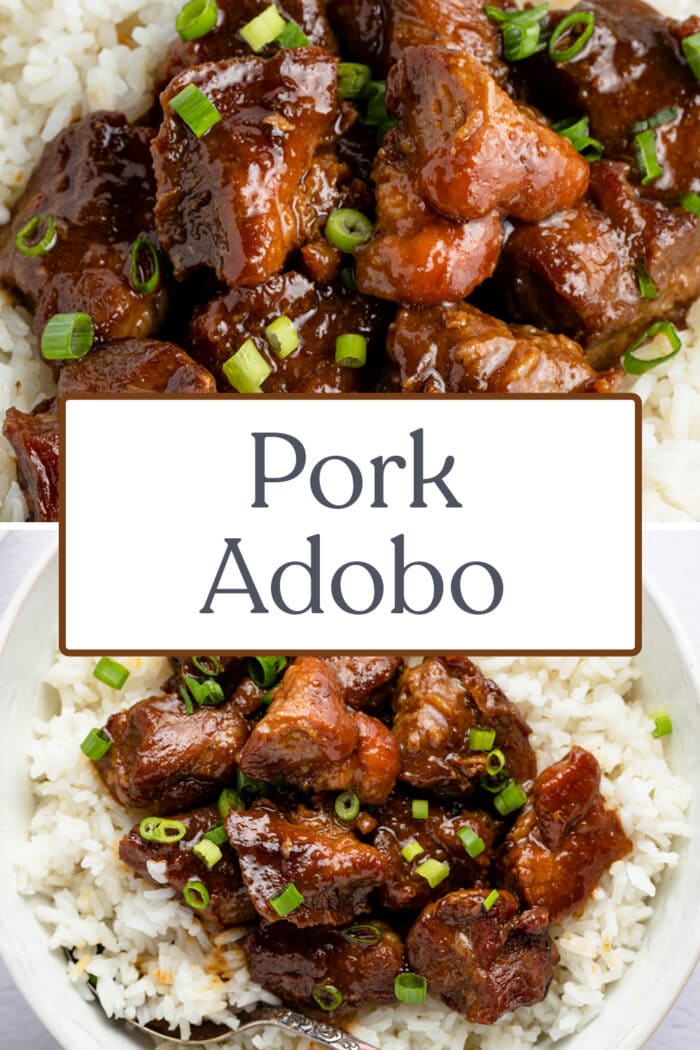
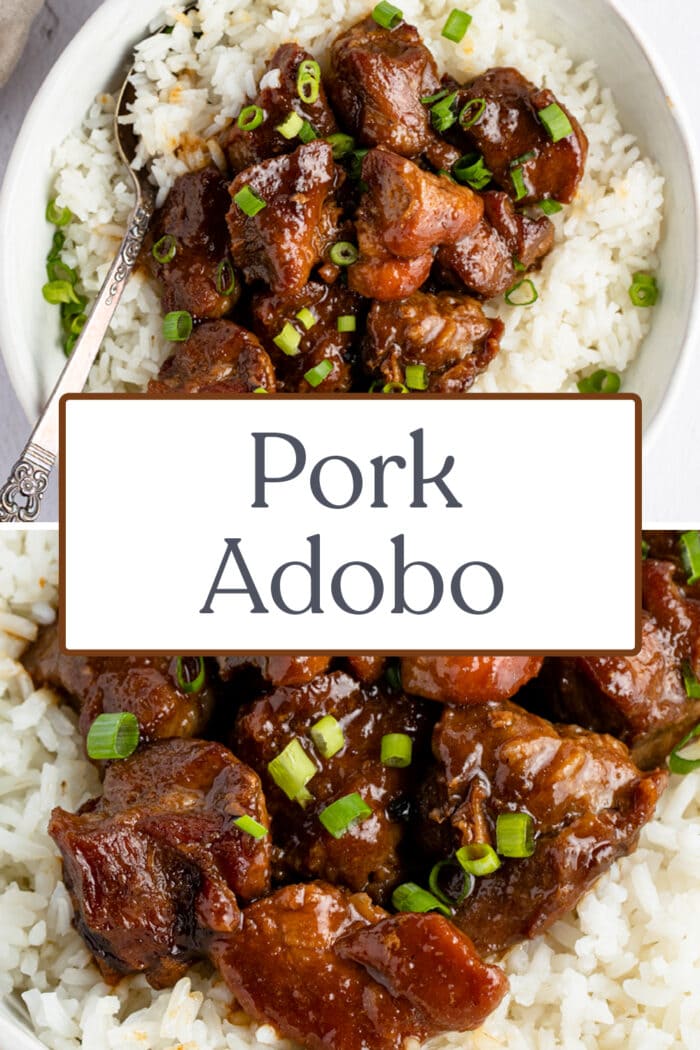
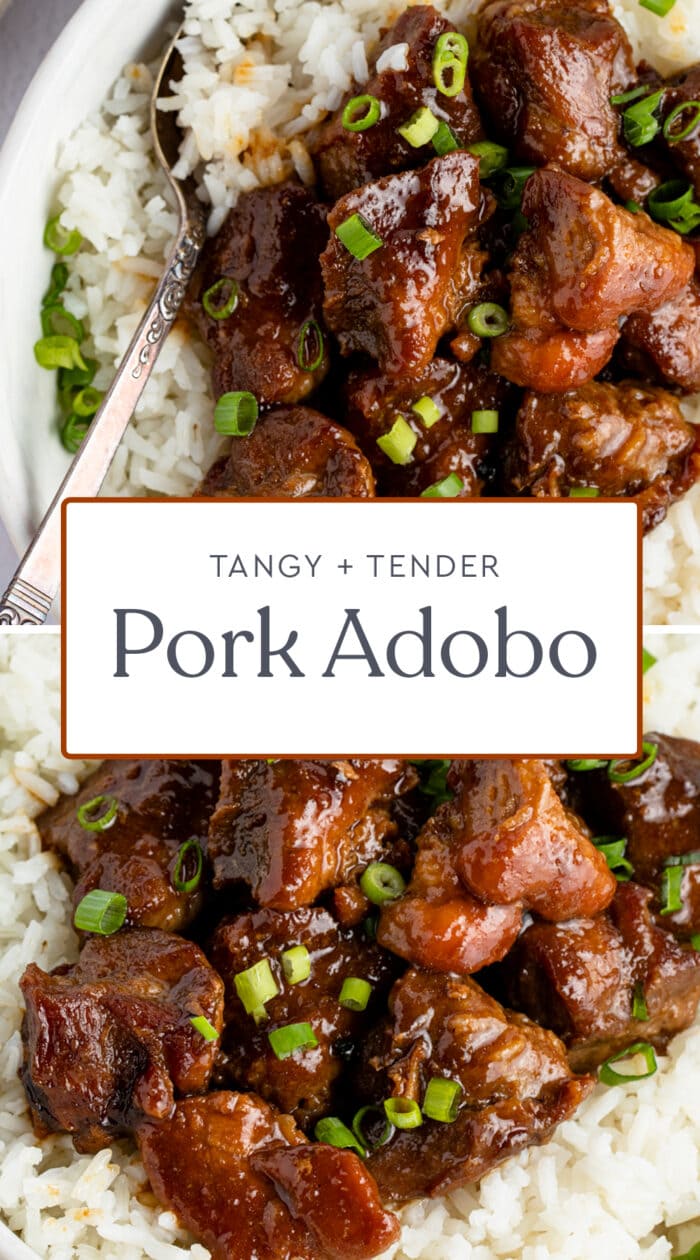
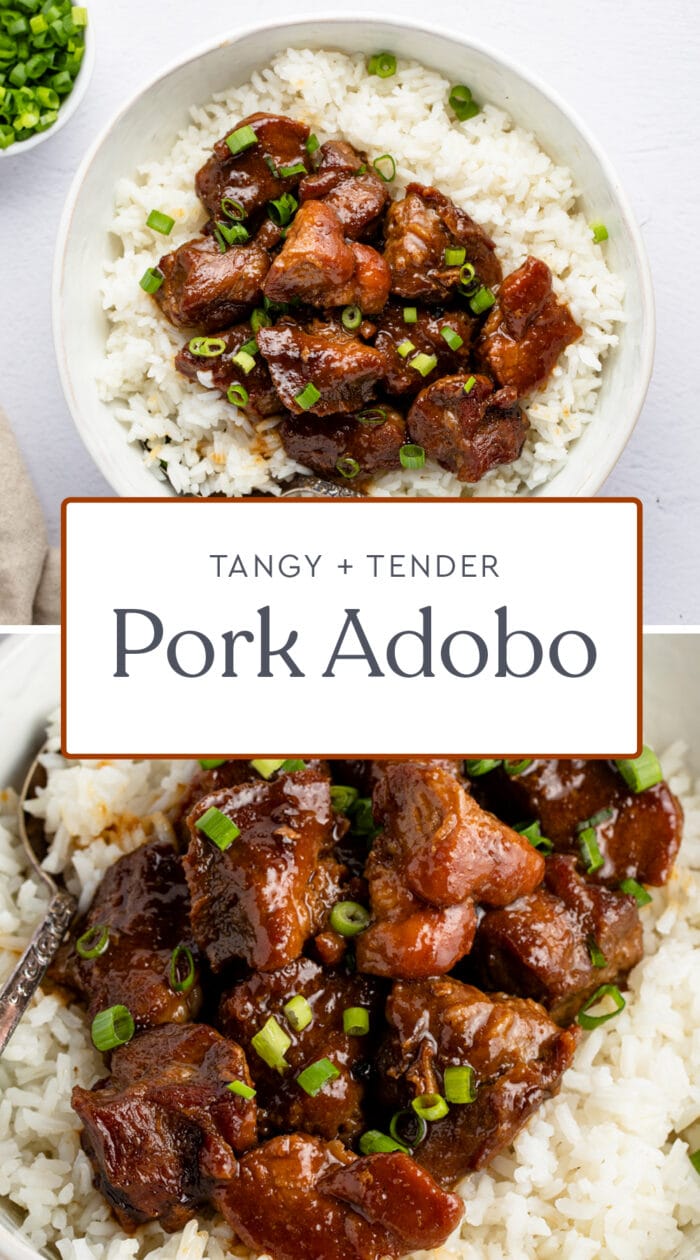
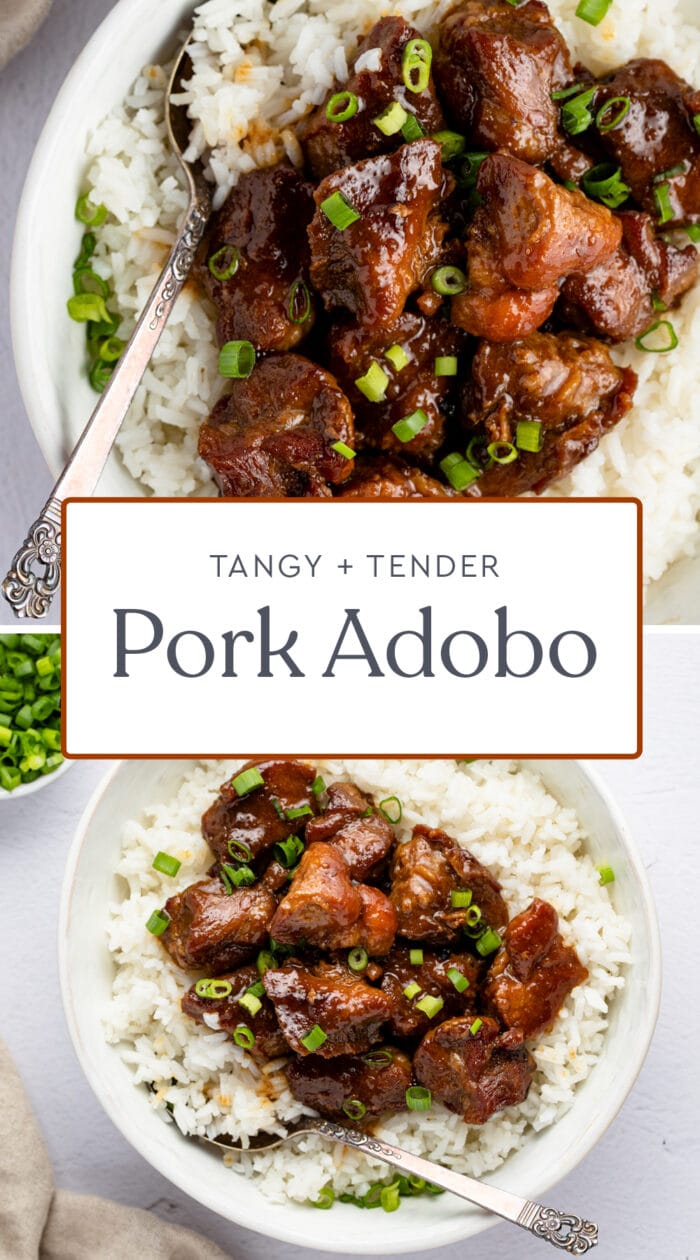
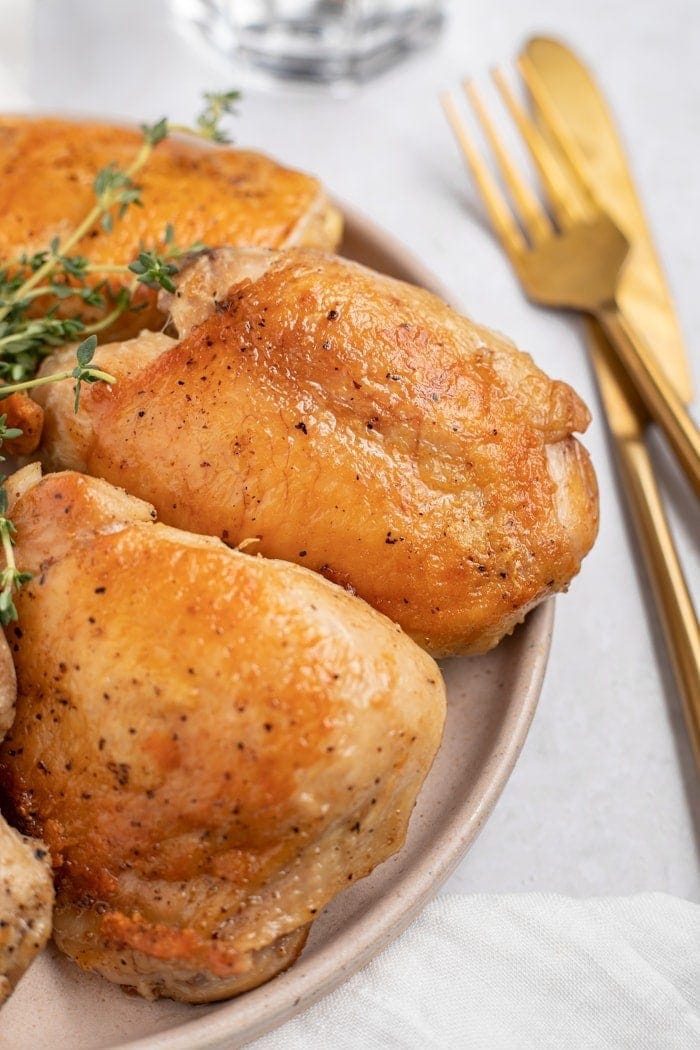
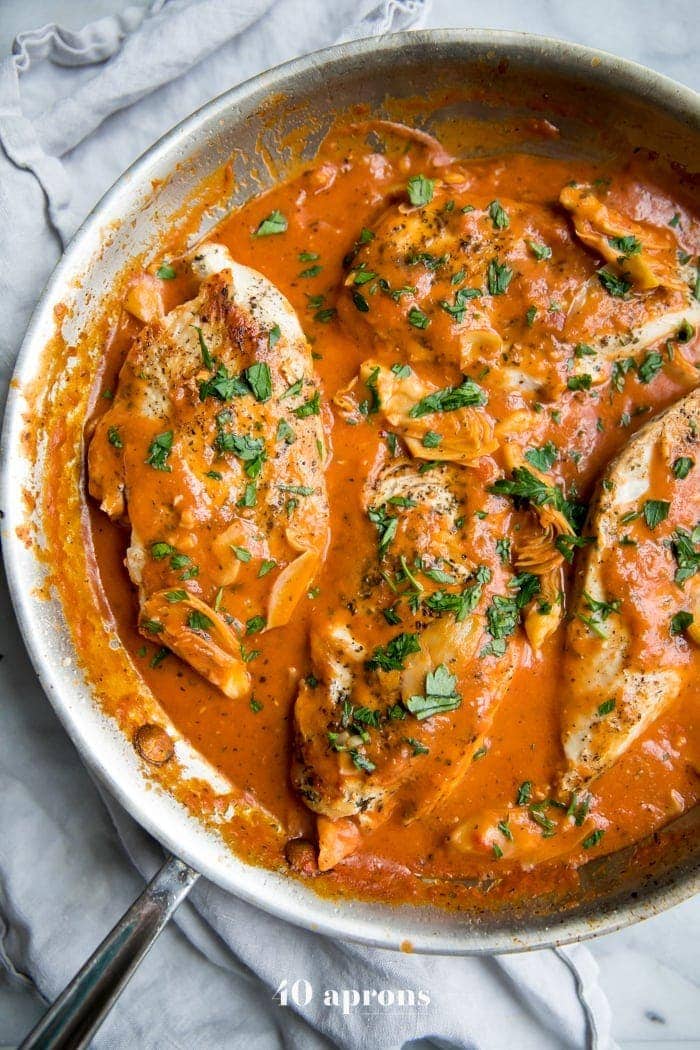

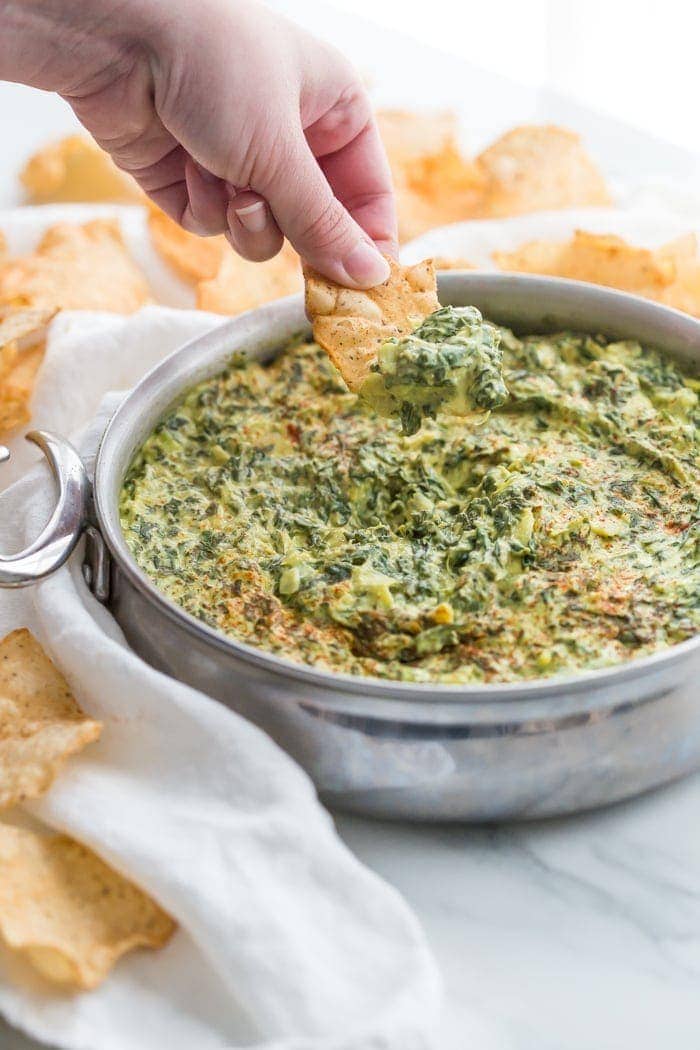












Very good the pork was a little dry not sure if I cooked it too long
It’s definitely possible! I always recommend using an internal meat thermometer and going by the inside temp of the meat rather than the cook time. The food-safe temperature for pork is 145° Fahrenheit, so we recommend you remove the pork from the heat when it reaches 140°F. Let it rest 5 minutes or so, and the residual heat will finish cooking it to that 145° mark without over-cooking it!
Omg, I don’t know how this recipe doesn’t have more reviews! I’ve made it 3 times now and my husband said it’s the best thing I’ve ever made! And SO easy, as long as you’ve got the time to let it slow cook. I actually used pork tenderloin because that’s what I had on hand and it was so delicious! Can’t wait to try with pork shoulder.
We’re so glad you enjoyed it! 🙂